Kansas has a reputation for its vast plains, but green hills and lush forests also decorate the landscape. It is a treasure trove of nutrients and shelter for the state’s many animals that inhabit it. Across the entire state, Kansas is the home to hundreds of plant and animal species, but they aren’t all safe or peaceful. If you get a chance to check out the local rivers, knowing which areas with the most snake infested waters is important. Let’s learn more about what Kansas rivers hold below.
Most Common Water Snakes in Kansas Rivers
As you venture to the local rivers, Kansas only has a few important snakes to watch for. Each of these snakes pose their own risk and are highly abundant in the local river systems. While they aren’t all venomous, any of these water snakes could pose a major threat to your recreational activities. Knowing the snakes to watch for in these rivers means the difference between a nice day on the river and a trip to the hospital.
Northern Cottonmouth

This snake lives primarily in the southeast region, in the Spring River drainage system.
©Danny Ye/Shutterstock.com
The northern cottonmouth is the most dangerous snake in these rivers to watch for. According to local authorities, it is currently the only venomous water snake in the state. Its 3-foot length conceals itself underwater with dark crossband markings along its entire body. Their normal diet includes fish, frogs, lizards, small mammals, and birds.
Be careful if you see one of these snakes settle into a defensive posture. Once they bite you, they release cytotoxic venom that damages your bodily tissues at the site of the bite. While most people don’t die from the bites, the resulting pain is torturous.
Graham’s Water Snake
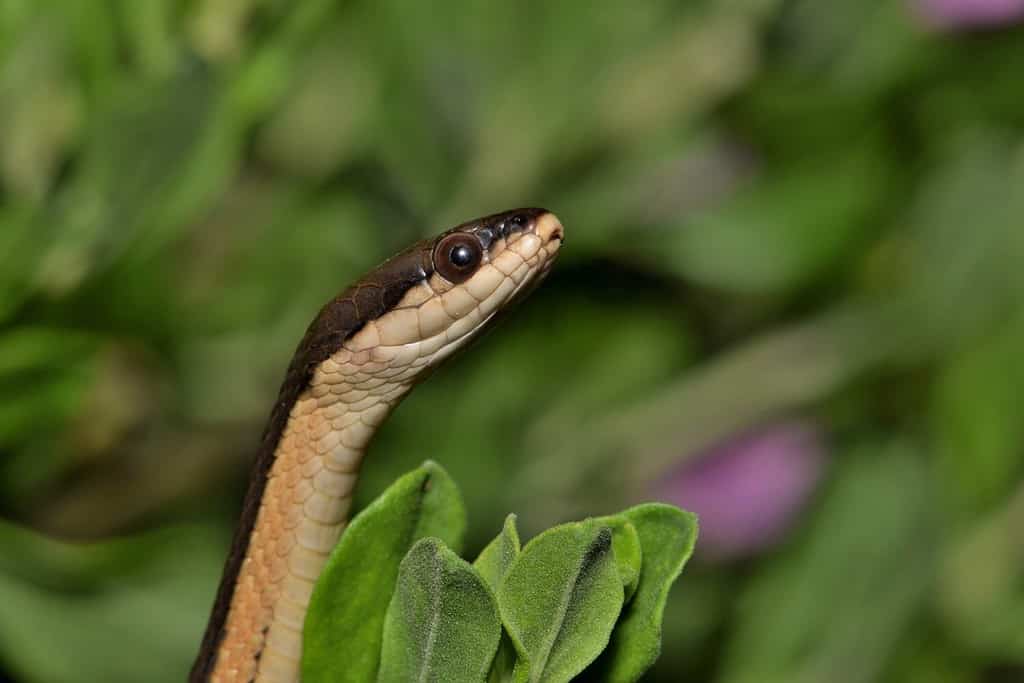
The Graham’s water snake lives near the same area as the northern cottonmouth, but it is non-venomous.
©Brett Hondow/Shutterstock.com
Measuring 18-28 inches in length, Graham’s water snakes have a light-colored belly with a gray or brown back. Preferring to live in rivers, these snakes also find themselves in lakes, streams, and marshes. Their diet primarily consists of crayfish.
If they feel threatened by you, these water snakes have no venom to defend them. They don’t coil, constrict, or bite. Instead, they release an odor that hopefully deters the predator after them.
Northern Water Snake
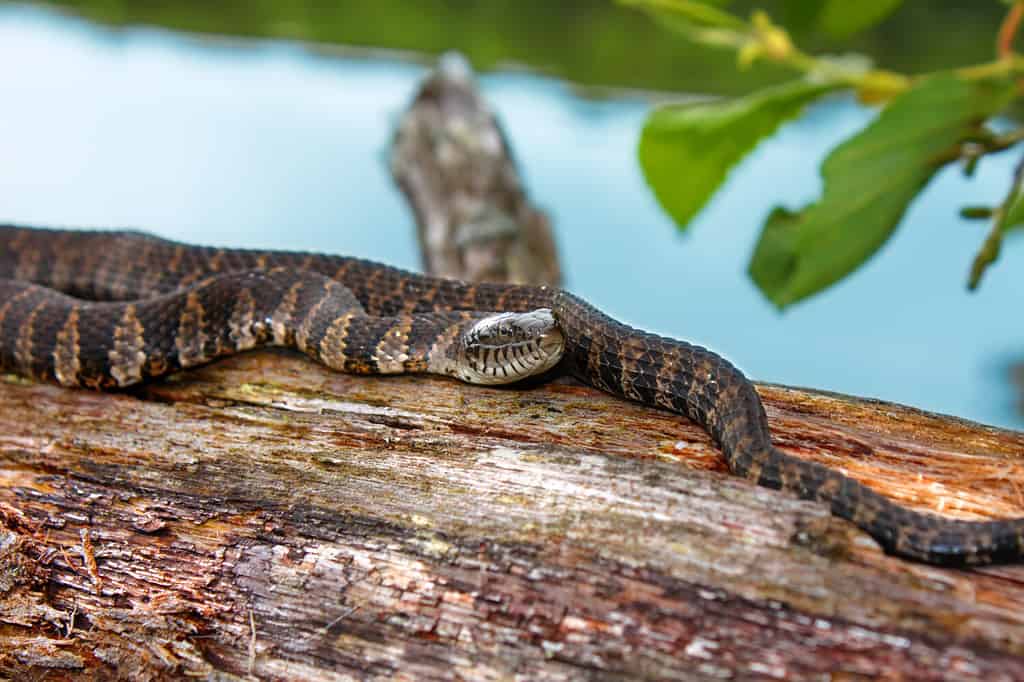
Reaching up to 5 feet long, the
northern water snake
is easy to mistake for a northern cottonmouth.
©Jason Patrick Ross/Shutterstock.com
While the northern water snake looks a lot like a northern cottonmouth, they have many features that separate them. With a dark brown body and blotches that resemble this venomous snake, take solace in knowing that this species has no venom. Even if they get close, they cannot release any poison to cause you harm. Still, if provoked, the northern water snake has no problem striking anyway.
Diamond-Backed Water Snake
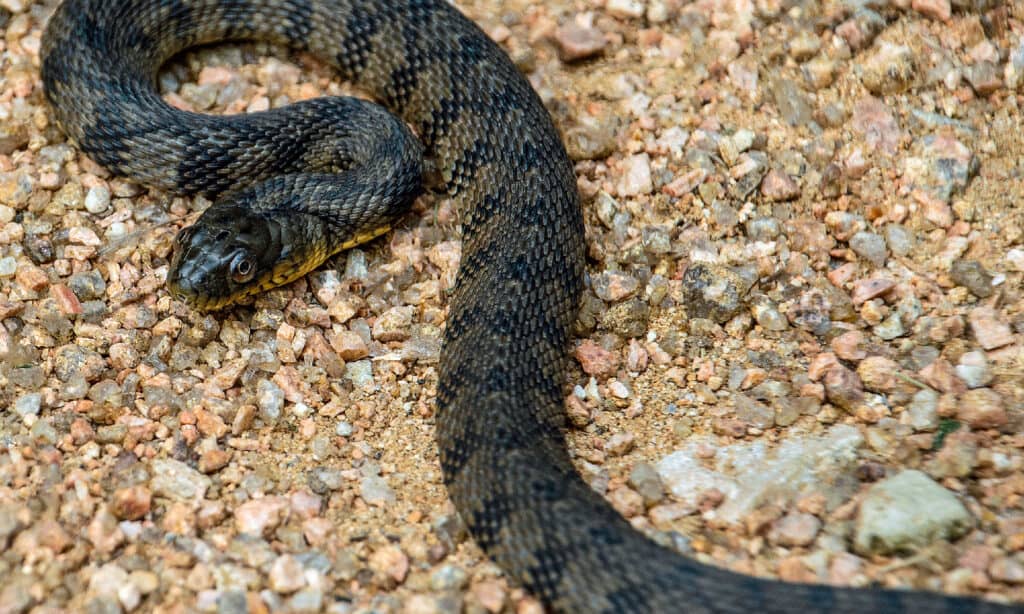
The most distinctive feature of this water snake is the diamond pattern that their name comes from.
©iStock.com/williamhc
Found primarily in southern Kansas rivers, the diamond-backed water snake has a light belly with a brown body. Diamond-shaped markings line their back, allowing them to conceal themselves beneath the water’s surface. With a substantial amount of activity in the spring and summer months, they sometimes lay near the edge of the water to enjoy the sun’s warmth. If you disturb this peace, you run the risk of a non-venomous bite to deter you.
Kansas’s Snake Infested Rivers
Chikaskia River

The Chikaskia River goes through Kansas and Oklahoma, and it is filled with checkered garter snakes like this one.
©James Brunner Photography/ via Getty Images
Chikaskia River has multiple snake species to watch out for, including the checkered garter snake. This state-threatened species tends to live west of this river, but they also live in grasslands and hills near the river. The river stretches 159 miles and is a tributary of the Kansas segment of the Arkansas River. It also connects to the Mississippi River’s watershed. Though there are many ways to spell this river’s name, the United States Board on Geographic Names chose the official spelling of Chikaskia at the end of the 1800s.
With many different snake species from the Arkansas River flowing in, the most notable animal in this river is the catfish.
Arkansas River
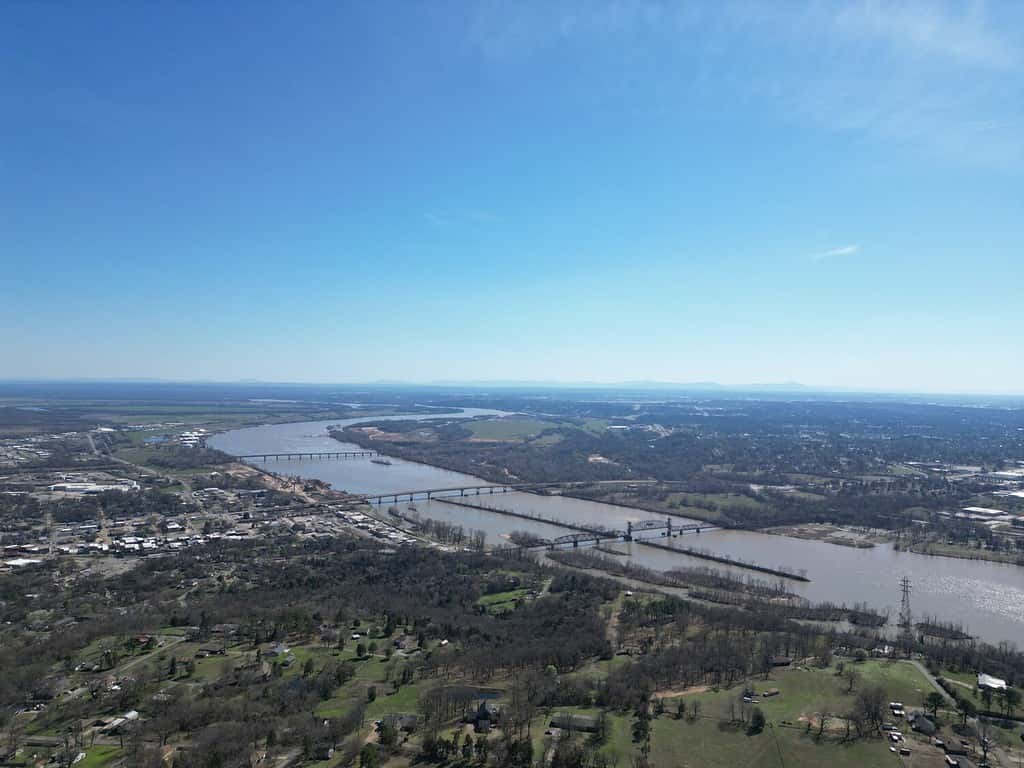
The Arkansas River’s snake infestation comes from the Mississippi River, which is a tributary.
©Jonathan C Wear/Shutterstock.com
If you want to avoid the northern cotton mouth, visiting the Arkansas River is not the way to achieve this goal. The northern cottonmouth is extremely common in this river, considering that it stretches 1,469 miles. As the sixth-longest river in the nation, it offers miles of space for these snakes to thrive. Some of the other common snakes in this river include the plain-bellied water snake, the banded water snake, and the queen snake. In total, it is the home of 9 different water snake species.
Kansas is just one of the many states that touch this long river. The river connects Kansas to Colorado, Oklahoma, and Arkansas from end to end. It flows east and southeast, coming from the Mosquito mountain range. At the end of the river in Arkansas and Oklahoma, it finally connects to the Mississippi River.
Ninnescah River
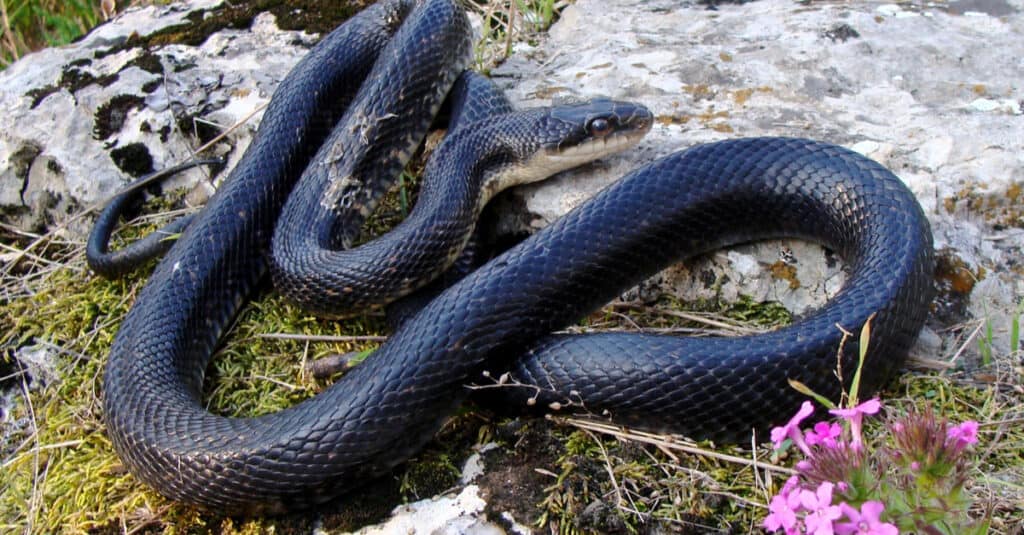
Black rat snakes are commonly found within the Ninnescah River.
©Matt Jeppson/Shutterstock.com
The Ninnescah River stretches just over 56 miles, containing its entire length within Kansas. As a tributary of the Arkansas River, you still put yourself at risk of all of the same snakes, like the northern cottonmouth. Black rat snakes and many water snakes call this river their home. While the number of snakes isn’t as high as in other areas, the volume of snakes in this space is quite high.
Missouri River

The Missouri River is one of the most snake-infested rivers in the entire country, and many of the snakes in its tributaries flow from it.
©Wirestock/iStock via Getty Images
With 2,540 miles of space to flow, the Missouri River is no stranger to the snake population. With 47 different snakes that live in its waters, they thrive on easy access to food and areas to hide. Some of the most common snakes to find along the Missouri River include the yellow-bellied water snake, the northern cottonmouth, and the diamond-backed water snake, but they are far from alone. Their accompanying animal species include over 400 different kinds of birds, mammals, reptiles, and amphibians.
No river exceeds the length of the Missouri River in the entire United States. Along with passing through Kansas, this body of water connects North Dakota, South Dakota, Iowa, Missouri, and Montana. Flowing into the Mississippi River, it is one of the biggest sources of transportation and sustenance for the locals that access it. Being careful around these snakes prevents dangerous situations from unfolding, especially when you’re around the northern cottonmouth.
Neosho River
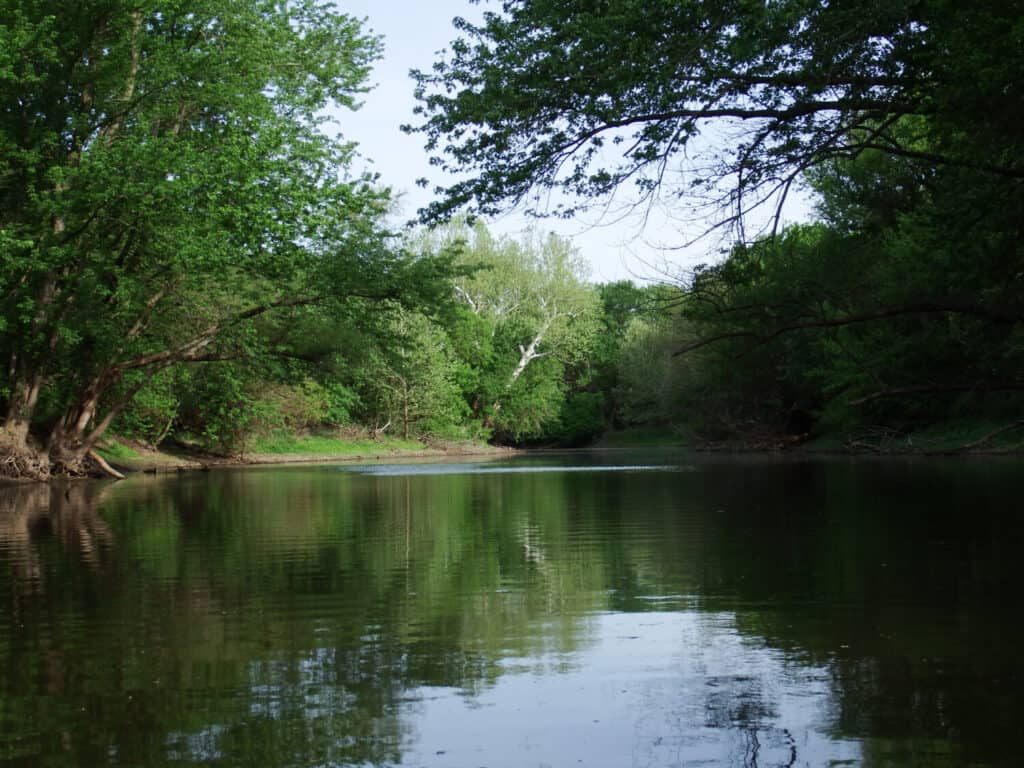
The high snake population of the Neosho River could be due to the Arkansas River, of which the Neosho River is a tributary.
©South 500 Photography/Shutterstock.com
The Neosho River has many different species of water snakes, including plain-bellied water snakes, western rat snakes, rough green sakes, speckled kingsnakes, northern water snakes, and common garter snakes. Since it flows as part of the Arkansas River and the Mississippi River watershed, much of the snake population comes from these areas. Stretching 463 miles, the name of this river comes from the Osage language, and it means “clear water.”
Cimarron River
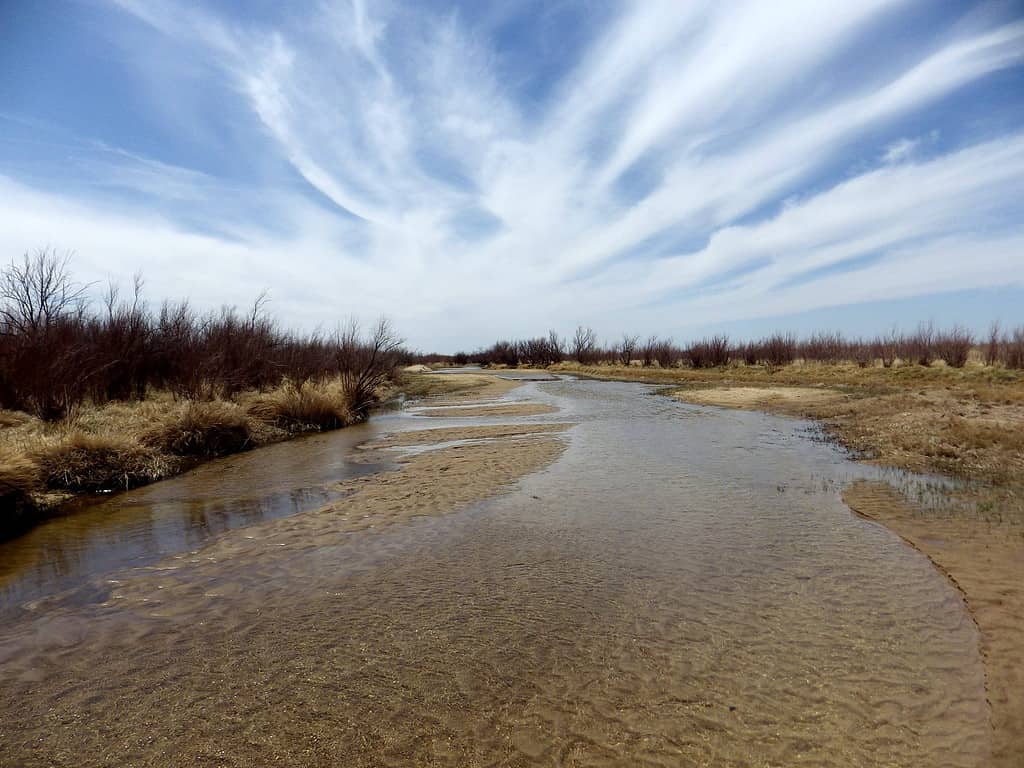
The total length of the Cimarron River stretches 698 miles, spanning across New Mexico, Kansas, Oklahoma, and Colorado.
©Sarah Zukoff (entogirl) / CC BY 2.0, Flickr – License
Cimarron River is the only river on this list that doesn’t directly connect to any major city. Flowing initially from northeastern New Mexico, most of this river is in Oklahoma. However, as it crosses the southeast corner of Colorado, it flows through Kansas before returning to Oklahoma. It is part of a draining water basin that covers almost 19,000 square miles. Since it flows from the Arkansas River, it shares the same risk of its water snake species for anyone who visits.
The biggest danger in the Cimarron River is the poor water quality. Since the river hits natural mineral deposits as it flows, the minerals turn the soil red. While building the Keystone Dam was a pivotal move to protect the downstream Arkansas River, it formerly caused major discoloration in the riverbank.
Smoky Hill River
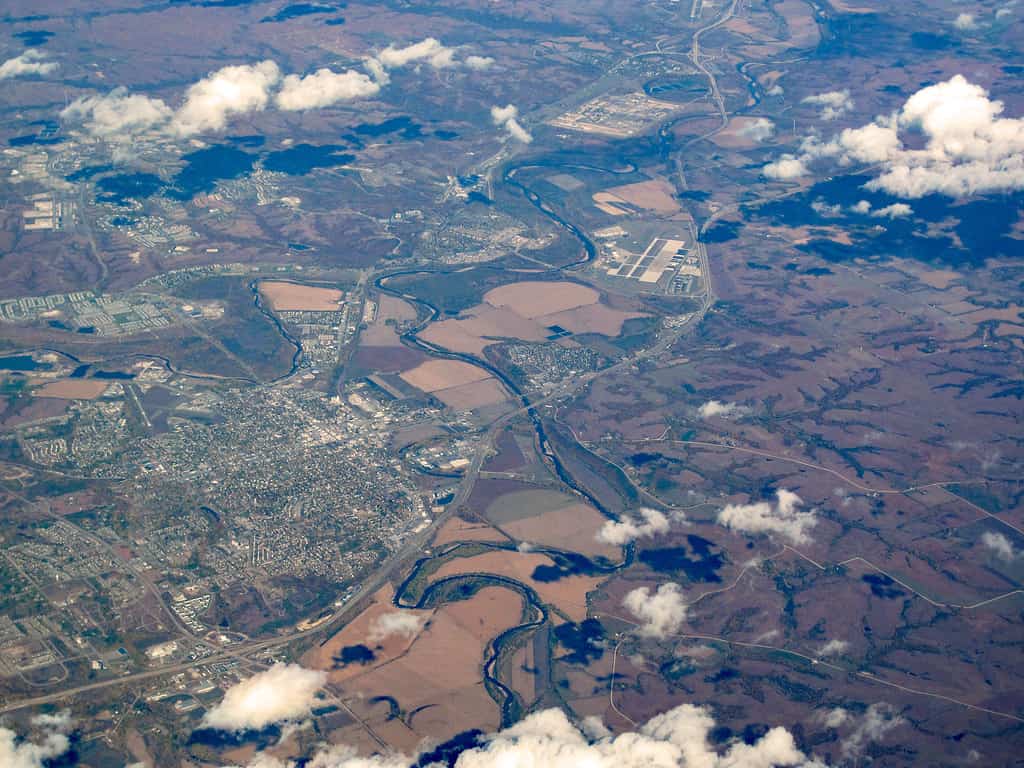
Smoky Hill River connects to their wildlife area by the same name, offering refuge to local animals.
©James St. John / CC BY 2.0, Flickr – License
While this river hosts many different recreational activities, Smoky Hill River connects to the Smoky Hill Wildlife Area as a home for many animals. Despite being the home to many different snake species, it is a local hangout for hiking, horseback riding, and other outdoor activities. It connects Kansas to Colorado, but one of the biggest dangers of the river is the possibility of a snapping turtle bite. The most common snake along this river is the common garter snake.
Most Snake-Infested Rivers in Kansas
| River | Types of Snakes Found | Length of River |
| Chikaskia River | Checkered garter snake, various water snakes | 159 miles |
| Arkansas River | Northern cottonmouth, midland water snake, broad-banded water snake, diamondback water snake, Graham’s crayfish snake, gulf swamp snake, green water snake, and queen snake | 1,469 miles |
| Ninnescah River | Black rat snakes and various water snakes | 56 miles |
| Missouri River | Yellow-bellied water snake, northern cottonmouth, and diamond-backed water snake | 295 miles |
| Neosho River | Plain-bellied water snakes, western rat snakes, rough green sakes, speckled kingsnakes, northern water snakes, and common garter snakes | 463 miles |
| Cimarron River | Northern cottonmouth, midland water snake, broad-banded water snake, diamondback water snake, Graham’s crayfish snake, gulf swamp snake, green water snake, and queen snake | 698 miles |
| Smoky Hill River | Common garter snake | 575 miles |
The photo featured at the top of this post is © Gerald A. DeBoer/Shutterstock.com
Thank you for reading! Have some feedback for us? Contact the AZ Animals editorial team.






